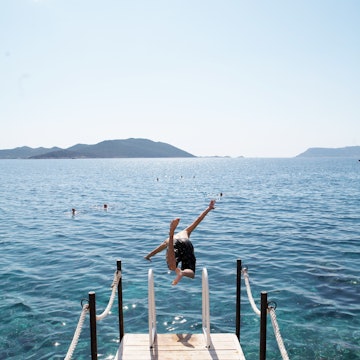
Overview
The ancient Lycians were on to something when they based their empire on the stunning Teke Peninsula, the chunk of Mediterranean paradise between Antalya and Fethiye. This is Turkey at its most staggeringly beautiful: sandy sweeps of shore hug a coastline lapped by jade waters and backed by forest-blanketed slopes. The Turquoise Coast is prime sun-and-sea territory, but step off the beach and you'll find ancient cities such as Xanthos, Tlos and Arykanda perched precariously atop hills, and ornate tombs carved into cliffs at Pınara and Myra. Hike between ruins on a section of the 500km-long Lycian Way and you'll be richly rewarded with scenery worth the sweat.
Leave the planning to a local expert
Experience the real Turquoise Coast. Let a local expert handle the planning for you.
Must-see attractions
in partnership with getyourguide




















